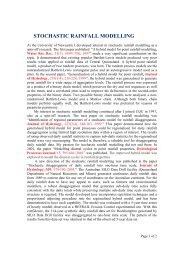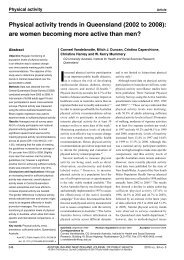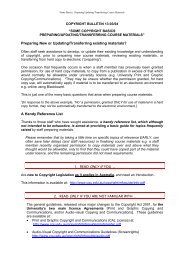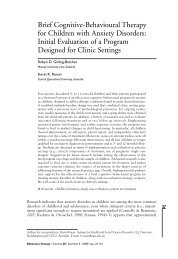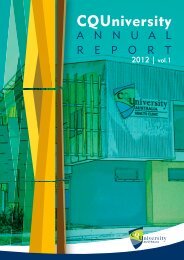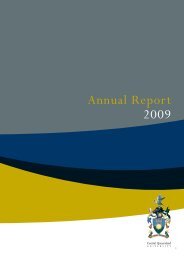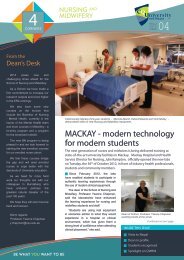Homes away from home
Homes away from home
Homes away from home
- No tags were found...
You also want an ePaper? Increase the reach of your titles
YUMPU automatically turns print PDFs into web optimized ePapers that Google loves.
Home <strong>away</strong>More travellers are shunning big hotels for the down-<strong>home</strong> quaintness of aBefore the days of large international hotelchains, the mainstays of travellers were thewayside inn, the hostelry, and the chambred’hôte. They were places to rest, sleep andfind some sustenance – and rest the horses.Today we’ve swapped four-leggedtransport for diesel or petrol-fuelledhorsepower and we have many more choicesof where to prop for the night, but we still gravitate to smalleroptions – the B&B or boutique luxury hotel. In Europe andAsia, the popular B&B equivalent might be a pensione, aninn, a Japanese ryokan or just a small, family-run hotel. Allthese variations on a theme offer a more intimate, authenticexperience, especially outside big cities.What type of accommodation you choose says somethingabout the type of traveller you are. Some insist on six-starglobal-brand luxury; others avoid anything with more than 15rooms. There’s no strict definition of what a B&B is, but it’sprobably less than 10 rooms and, more often, much smaller.Of course many other things differentiate styles of travel.Do you think of yourself as a tourist or a traveller? Is luxuryan important component of travel or are you looking fora grassroots adventure with some quaint local flavour, orsomething in between? Do you carry a backpack – even adaypack? Or would you not be seen dead with one?Do you conscientiously study guide books, websites andother texts exhaustively before you go, play it by ear or hopon a tour bus and get the sightseeing out of the way quicklyso that you can mooch around cafés and shops?A couple of decades ago, bed and breakfast accommodationwas considered a more humble travel option. But today B&Bsencompass all levels, <strong>from</strong> high luxury with attentive service toa modest bedroom with a shared bathroom.In Europe and Australia, trends suggest B&Bs are becomingmore popular. They’re the antidote to the anodyne experienceof the large international chain hotel, the recognisable layoutof the rooms, the sameness of the furniture.Most seasoned travellers have experienced the occasionalrelief of lobbing into a grand hotel after a hectic adventure –welcoming a hot shower, fluffy towel, glass of wine or cuppa.28Be | autumn 2009
Travelsomething between hominessand professional standards –high-quality linens, wirelessconnections, a coffee machineavailable 24-hours a day and a <strong>home</strong>-cooked breakfast.Many guests are in Rockhampton for business but theymay choose to mingle in a communal lounge area, play agame of pool, bash out a tune on the piano or even chuck ashrimp on the barbie. Rockhampton laws allow for only threerooms to be let and each has a bathroom and a sitting area;Strelow hopes to convert an adjacent building to add moreaccommodation in the coming year.With an occupancy rate of over 60 per cent, Goldston isrunning at more than double the average occupancy of a B&B.The Strelows have made the Goldston House project a familybusiness. Their daughter Deborah, a chef with a qualificationin hotel management, is the day-to-day manager and cook.The down-<strong>home</strong> concept of the B&B lends itself to familyconcerns. The model has also been embraced by formerSydney lawyer Stephanie Pursley and her husband DenisCostello, an architect, who teamed with their daughter,Tiffany Firth, a chef, to set up one of the hottest B&Bs inOtago in New Zealand’s South Island. Since opening in2007, Tiritiri Lodge has been invited to join the prestigiousNZ Lodge Association.Pursley and Costello designed and built Tiritiri specificallyas a five-room B&B. They run what’s known as hostedFast factshave to like people.The personal touch is vital.”“You• International visitors account for one-third of domestic B&Bbusiness but represent the fastest growing market. Europeanguests make up nearly half the international visitors to B&Bs.B&B customers are predominantly adult couples.• Both domestic and international B&B customers inject revenueinto the local economy. They spend more per visitor on nearly allaspects of their travel, except airfares.• NSW and Victoria have the biggest share of the market, althoughnumbers of domestic visitors have been in decline. WesternAustralia and South Australia are the fastest growing markets.• B&B customers have more fun!accommodation – that is, whenthey have guests they mighthost afternoon tea, pre-dinnerdrinks, dinner or more than oneof these on any day. At $600-plus a night, Tiritiri is pricedto match its five-star label, yet Pursley says their guests wantsomething beyond five-star. They’re seeking the experienceof a gracious, hosted sojourn, a little like staying with distantacquaintances in a beautiful private house.Strelow and Pursley agree that income can’t be the onlymotivation to open a B&B; it’s as much about lifestyle as itis about making a living for the owner-host. A rule of thumbsays Strelow, who conducted research among more seasonedproprietors, is that a critical mass of five bedrooms to rent isneeded before a B&B can turn a respectable profit.“You have to like people,” says Pursley, who says one ofher aims is to make sure everybody has a good time. “Thepersonal touch is vital. I put things in the rooms that I likemyself – good books, fresh flowers, chocolates, fresh fruit.”The hostelry of old was a respectable, if modest, way toearn a living and for some it’s at least that. In the right placea B&B can be an important ingredient in local commerce. Anexample is Willunga House, a well-known and loved B&B inthe McLaren Vale wine area of South Australia.Willunga House was recently bought by Nick Scarvelisand Valerie Bainbridge, who moved south after years in theNorthern Territory Public Service. Far <strong>from</strong> regarding this wellestablishedbusiness as an opportunity for an easycountry living, Scarvelis and Bainbridge have appliedthemselves to building their business in synergy withwineries, restaurants and other attractions in thebroader region.“I wouldn’t have gone into this with a viewto it not being profitable,” says Scarvelis, whonevertheless says it is about both business andlifestyle. Willunga does have, however, the magicnumber of five rooms – enough to take a group ofpeople or to accommodate a wedding party.Their aim is to keep, or even raise, Willunga’sstatus as a luxury B&B. The house has a heritagelisting and to this Scarvelis and Bainbridge haveadded upgraded rooms with extras such as beautifulrugs, digital TVs and a combination of contemporaryand traditional furniture; an organic garden; energyefficientfeatures and a top-of-the-range breakfastusing the very best fresh local produce.For proprietors the B&B is an opportunity toput a personal stamp of taste, a point of view, ontourist accommodation. Each interpretation is unique,each visit an opportunity for guests to encounterthe unexpected and discover something new anddifferent about their destinations.Photos: Strelow family courtesy of Peter Lawrence; Goldston House courtesy of Goldston House30 Be | autumn 2009





